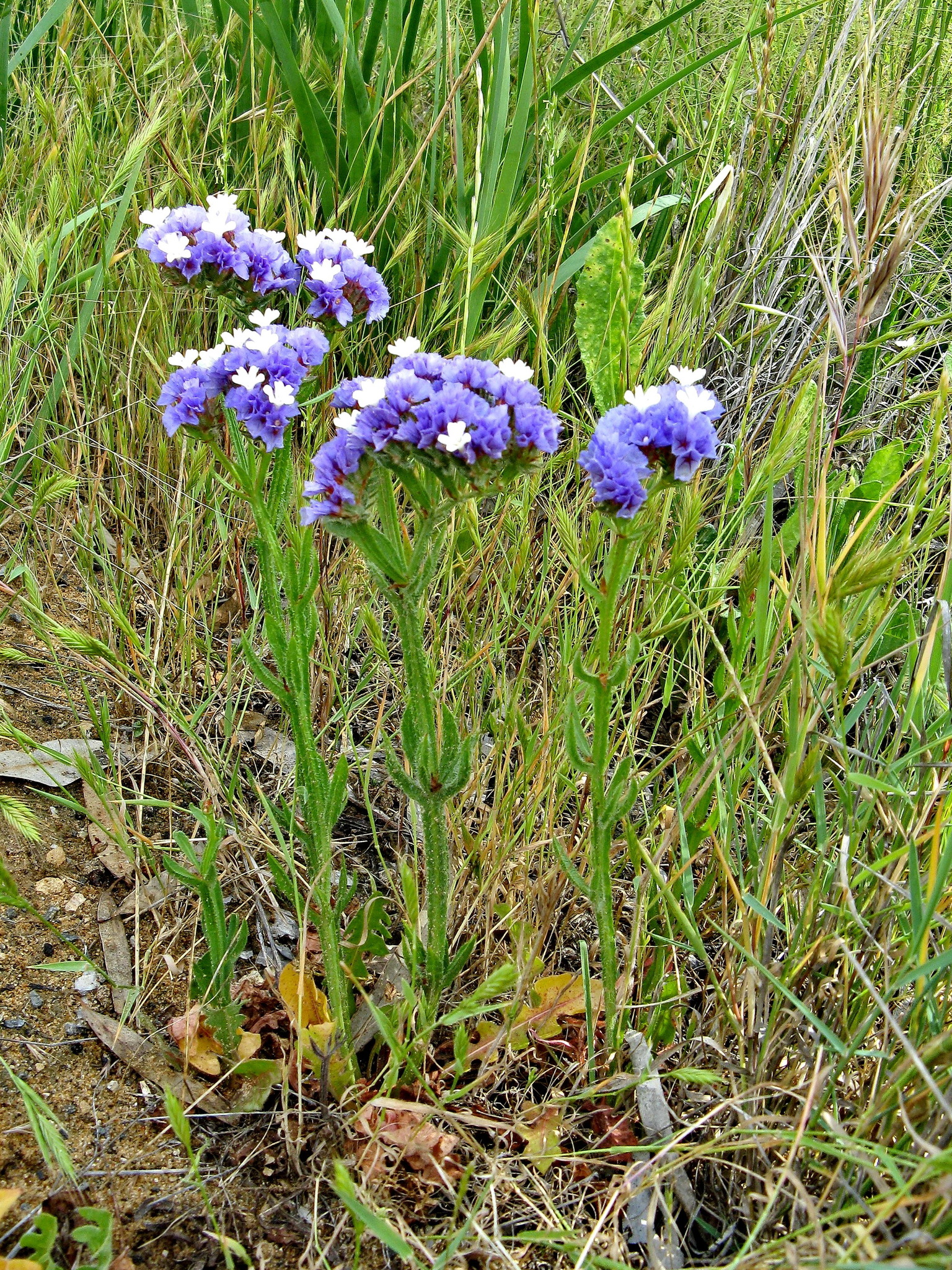
Greek leimon—meadow, referring to the meadow-like salt pans where these plants often grow.
Shrubs, subshrubs or occasionally annual herbs. Leaves entire or lobed and mostly in a basal rosette. Flowers in branched clusters or spikelets with scaly bracts. Within the terminal 3 bracts are small groups (spikelets) of 1-5 flowers. Sepals funnel-shaped, papery, often coloured, persistent. Petals fused at the base. Stamens joined to the base of the petals. Styles 5; mostly spring and summer. Fruit a small capsule enclosed in the persistent sepals.
L. dumosum is a name occasionally used but of no botanical standing.
Cut-flower everlastings generally known as Statice. Roots of some species used in tanning, others in fertility control.
Leaves mostly in basal rosettes; flowers in 1-sided papery clusters (everlasting); sepals 10-ribbed and funnel-shaped.
About 350 species cosmopolitan: mostly coastal and arid saline northern hemisphere, Mediterranean to Asia (Australia has 2 endemic and 5 naturalised species).
Luteyn (1976).
The range of species offered by nurseries varies from year to year. The key should be used as a guide only; it includes several naturalised species and other rarely cultivated species that are not described in the text.
Source: (1997). Plumbaginaceae. In: . Horticultural Flora of South-eastern Australia. Volume 2. Flowering plants. Dicotyledons. Part 1. The identification of garden and cultivated plants. University of New South Wales Press.
